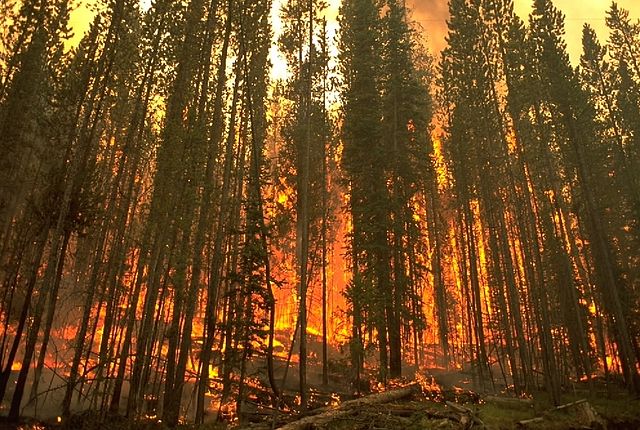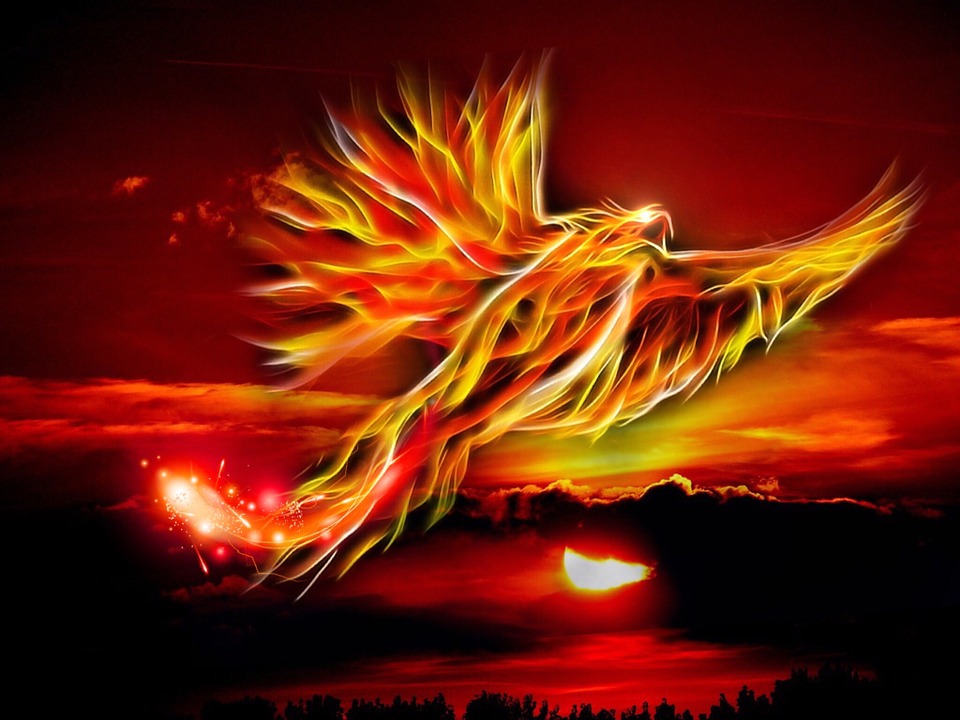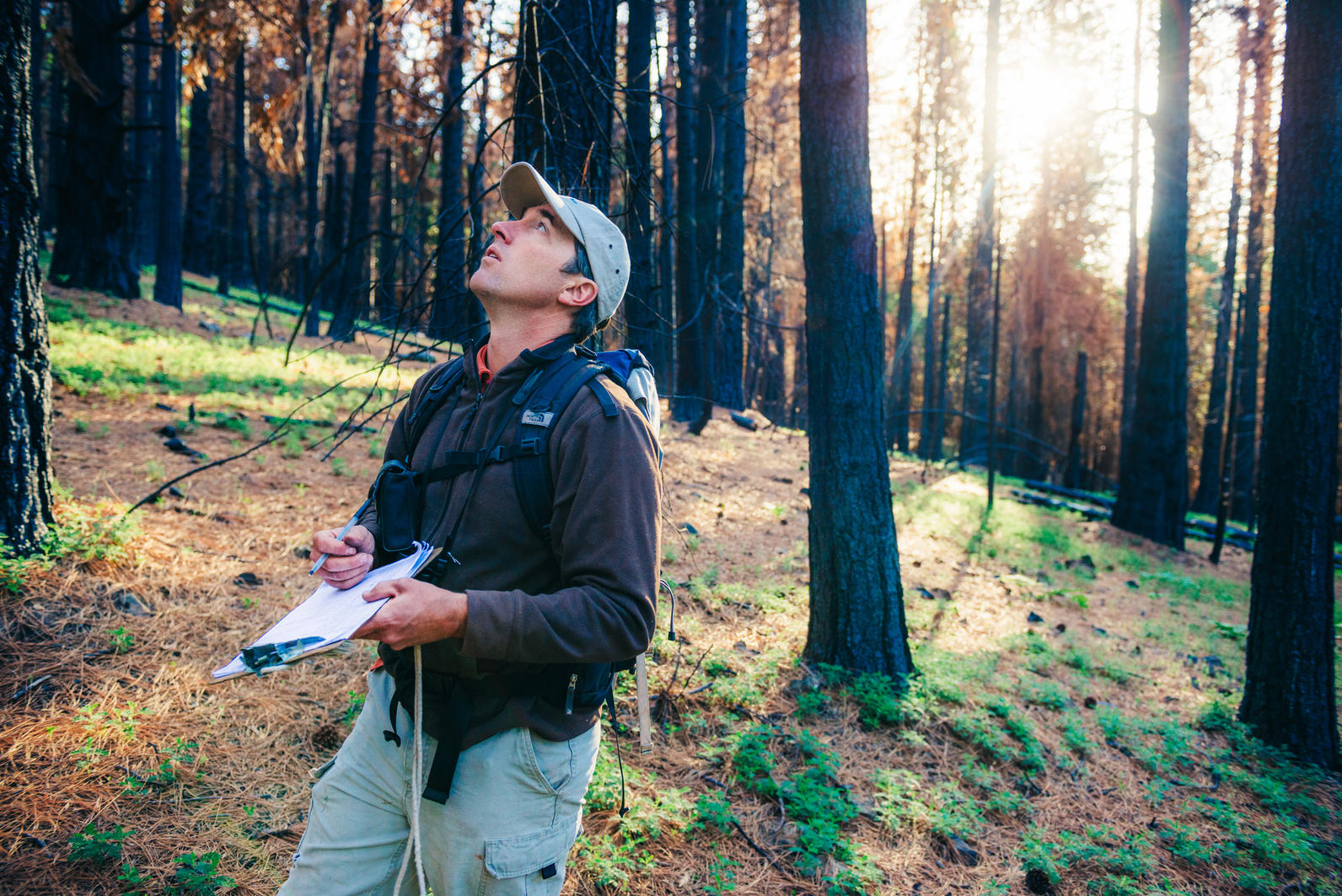 An ancient myth refers to the Phoenix, a bird which was supposed to live for 500 years, go up in flames and arise anew from ashes. It has come to represent rebirth, renewal, hope, etc.
An ancient myth refers to the Phoenix, a bird which was supposed to live for 500 years, go up in flames and arise anew from ashes. It has come to represent rebirth, renewal, hope, etc.
Ever since there have been terrestrial plants and animals, there has been fire. Ecosystems have evolved and the burning of forests and prairies recycle and renew those ecosystems. For many years we viewed fire as an enemy to be doused, but have come to recognize it as just one of many natural phenomena that birds and other organisms have to confront. Fire is essential for biodiversity; in fact, many plants and animals depend on fire. Most prairies depend upon fire to avoid being overwhelmed as fires reduce the encroachment of weeds and shrubs, providing habitat for the Lesser Prairie Chicken. (Years ago, in Illinois, about the only natural grassland left was along railroad tracks because the train wheels sparked fires along the rails.)
In the chaparral of Southern California, some plants have oily leaves that encourage fire which causes their seeds to germinate. The cones of Lodgepole Pine only open and release seeds after being burned. The endangered Kirtland’s Warbler depends upon young Jack Pines which only grow after older trees are burned away. Horned Larks adapt quickly to recently burned prairie areas, while Western Meadowlarks will avoid them. Sage Grouse live in sagebrush habitat and when that is burned, it takes 20 years to recover.
Not fighting fires leads to a buildup of fuels – dead trees, limbs, leaves – on the forest floor. Then when there finally is a fire, it burns more intensely. But of course, fire endangers flora and fauna and humans and their dwellings. Texas is in a major drought and is fighting dozens of major fires. Over 1500 houses have been destroyed so far. There were 181 fires reported in the last week alone. California is facing its share of fires as well. Many of these are lightning-caused but in Texas at least, 90% are human caused (campfires, lawn mowers, chain saws, etc.). Many homes have been destroyed, so the human impact has been substantial.
But what about the birds? What happens to them? Well, since most fires happen in late summer and fall, birds are finished nesting and many are starting their migration out of the area. The resident birds can usually escape the area (unlike deer or reptiles or other animals) and find suitable habitat nearby. But if the fire is widespread and burns over a long period of time, birds might not be able to find another area that provides the necessary food and shelter.
Different species of birds react differently to fire as do different habitats. A tropical forest fire is far more devastating to wildlife than a North American prairie fire because the soil of a tropical forest is very thin and erodes quickly when vegetation is no longer there to hold it. Fire, like many things birds deal with in everyday life, can be good, bad, or in between, depending. But habitats arise anew and reinvigorated, like the Phoenix.


Scientists have long known that fire is a primary force in shaping ecosystems. But because of its destructive power—incinerating homes, habitat, and valuable timber—frightened lawmakers and land managers have driven a campaign designed to control fire at all costs. Thus, for more than a century, fires were suppressed in California’s Sierra Nevada and throughout the West. And while this reduced historic levels of smoke and burned acreage, it left forest ecosystems critically out of balance. Without the cleansing fires that reduce ground fuels and kill some vegetation, many forests grew thick with trees and overcrowded with brush, a tinderbox that only made the landscape more vulnerable.
In those conditions, fire, naturally, has reasserted itself, and the number of wildfires in the West has grown by an average of about seven per year since the mid-1980s. At the same time, forests are burning both earlier and later in the season and with much greater severity than 100 years ago, a U.S. Forest Service study found. And a changing climate is predicted to bring further increases in the incidence of wildfire, say California experts. Temperatures in the Sierra are expected to rise an estimated 10 degrees Fahrenheit over the next century and the snowpack to melt almost a month earlier. That is, if there is snowpack. Last winter the Sierra was virtually snowless, dramatically compounding the effects of the state’s fourth year of drought. Researchers predict a combination of higher temperatures, increased evaporation, and reduced precipitation that could, in 70 years, more than double burned areas in California. Excerpted from Audubon.[/vc_column_text][/vc_column][/vc_row]